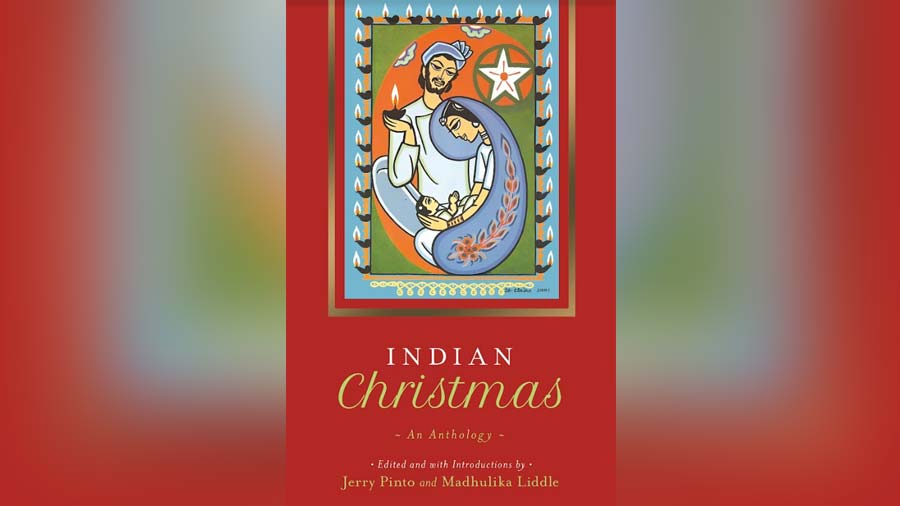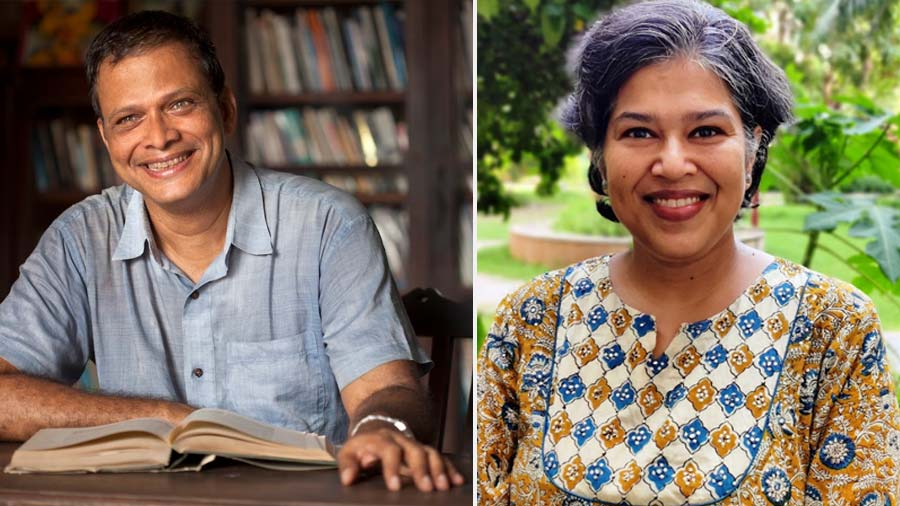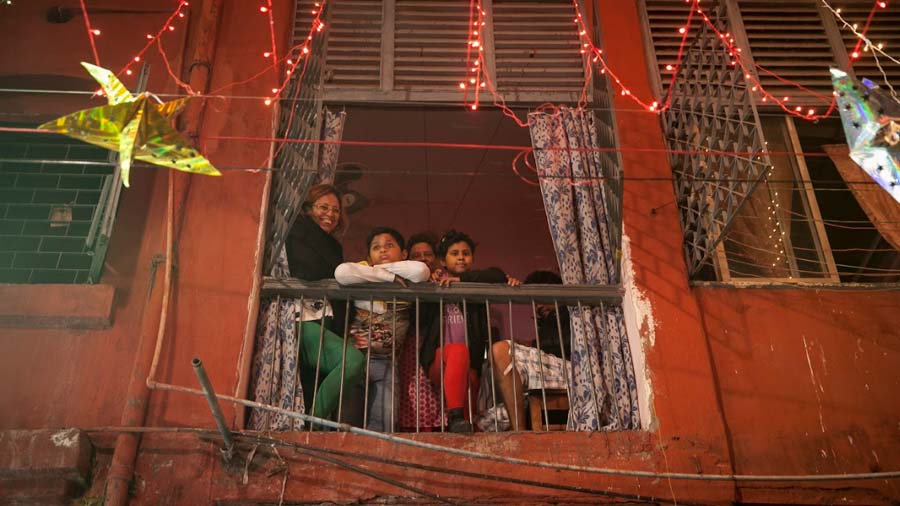Indian Christmas: Essays, Memories, Hymns, a compilation celebrating Christmas festivities and traditions unique to India, opens with a poem by Rabindranath Tagore. Titled The Child, it alludes to the birth of Jesus Christ and is the only poem Tagore wrote originally in English. He later translated it into Bengali as Sishutirtha. Christianity came early to India, it is said with the apostle Thomas who landed at Muziris on the Malabar Coast in 52 AD. Christmas, therefore, is intertwined into the fabric of India for longer and in more ways than we can imagine.
The editors, Jerry Pinto and Madhulika Liddle, have poured a lot of love and labour into this book and it shows in the remarkable stories it tells. Cake features in a big way — from the legend of the first Christmas cake in India to more intimate takes. The flavour of Christmas is brought alive in deeply personal pieces — there’s one about a Christmas wedding in Kottayam, another about how someone from a small village in Jharkhand keeps the Christmas spirit alive in the big city. Christmas celebrations in the Northeast have their own distinctive flavour, as does the East Indian Christmas of Mumbai. The impressive list of contributors includes Vivek Menezes, Mudar Patherya, Mohona Kanjilal, Elizabeth Kuruvilla and Nazes Afroz. The editors also weigh in with richly nostalgic memories of Christmas in their respective introductions.

Indian Christmas: Essays, Memories, Hymns, published by Speaking Tiger, has stories, poems, photographs, essays and hymns documenting Christmas traditions around the country
It’s no surprise that Kolkata features in a big way in Indian Christmas. Nazes Afroz’s photo essay Santa Comes in A Rickshaw captures the flavour of Christmas festivities at Bow Barracks. Mohona Kanjilal’s piece on Armenian Christmas food in Kolkata is a revelation.
Mudar Patherya’s piece, Calcutta, Teri Christmas Pe Qurbaan, is cheeky and evocative in turns. He remembers how, decades ago, they would engage a prominent Kolkatan (Russi Mody, Harshvardhan Neotia, etc.) to dress up as Santa and ride the streets of Kolkata in a buggy distributing sweets. On the Tolly Club Christmas Lunch, he writes, tongue firmly in cheek: “… Michelle belts out ‘It’s nowwww or nevveh’ at 2.43 p.m., some woman with purple hair walks in and well-intentioned folks stretch their necks to stare until their wives nudge them in the ribs, and the buffet comprises orange ginger roast chicken with fennel and radicchio salad, grilled mutton in mint sauce and blanched fish in leek sauce and broccoli mornay for the thirty-third consecutive year.”
While it has an eye on the past, what this anthology does beautifully is capture the contemporary magic of Christmas in India. In an exclusive conversation with My Kolkata, the editors spoke about what makes the Indian Christmas so special.
What makes the Indian Christmas stand out from other Christmas celebrations around the world?
Jerry Pinto: I believe that every nation brings its own colours and flavours to the celebration of Christmas. In Holland, I believe, Sinter Klaas comes in the first week of December and in Finland, Santa rides a goat. The food changes based on cuisine and availability. But the central mystery remains the same.
Madhulika Liddle: To add to that, I’d also say that unlike a lot of countries where Christmas has one (possibly ‘pan-country’?) flavour, India has the advantage of a good deal of regional diversity. So we really don’t have one type of Christmas celebration, but many variations.
What drove the selection of the pieces in the book?
JP: The selection process was as inclusive as the message of Christmas: it was about bringing many narratives together. But it was also thought through like a buffet: you want to bring different dishes, complementary ones together.

The book is edited and with introductions by Jerry Pinto and (right) Madhulika Liddle Ashima Narain (Jerry Pinto); courtesy Madhulika Liddle
Were you looking for literary excellence or to just capture the sheer variety of Christmas celebrations in India?
JP: We sought pieces that would be well-written and capture the variety of Christmas celebrations across the length and breadth of India.
What made you open the book with a poem by Tagore?
JP: Who better? Tagore responded deeply to the image of Christ and often had a Christmas message. To me, this was a harking back to the time when we could see the religions of our great nation as streams and we could find revival for the spirit in them.
Was the process of editing the book a voyage of discovery for you? Did you learn anything new and interesting about Christmas in India while working on the book?
ML: Finding such a wide array of memories and reflections on Christmas was a joy, and an eye-opener. The celebrations of Christmas in areas that are not often in the limelight but have substantial Christian populations (Nagaland, Mizoram, Meghalaya, the Chhota Nagpur Plateau) was especially new and interesting for me.
What are your own memories of Christmas like?
JP: I remember the sound of Silent Night coming through the night as the carollers came calling in Nagpur where we had gone to spend one Christmas. I remember a family reading of the Nativity story from the Gospel of Saint Luke. I remember the food, the presents, the general good cheer.
ML: I remember helping prepare for Christmas: cutting doughnuts and gujiyas, decorating the house, making Christmas cards for close relatives. The carols, the fragrance of spice, the deep sense of belonging and happiness.
Why is food such a big part of the Indian Christmas?
JP: I suspect every festival has a menu and a set of dishes that everyone comes to expect at the festival. In my family, we didn’t do much baking, so our sweets came from other women in the parish who cooked and sold their sweets.
What is the story of the first Indian Christmas cake?
ML: The first commercially produced Christmas cake in India was supposedly made by a Thalassery baker named Mambally Bapu in 1883. The story goes that an East India spice planter brought Bapu a sample of imported Christmas cake, along with some ingredients, and asked Bapu to try making a version of the cake. Besides the ingredients provided, Bapu used a brew of cashews and bananas as a raising agent, and was able to create a cake that impressed the planter.

Onlookers witness the Christmas celebrations at Bow Barracks Nazes Afroz
With one of the biggest celebrations in India, the Kolkata Christmas is truly special, from Midnight Mass at St. Paul's to the illuminated Park Street, Bow Barracks and all the food everywhere. How have Kolkatans kept the spirit of Christmas alive?
ML: Kolkata has long had a tradition of multiculturalism, with everyone from Chinese to Portuguese, Baghdadi Jews to Greeks and Afghans having settled in what has long been a cosmopolitan city. That cosmopolitan-ness, combined with the fact that this was the capital of British India for so long, means that Kolkata has a vibrant tradition of Christmas festivities, not restricted to Christians.
Tell us a bit more about the Armenian Christmas food of Kolkata.
ML: The Armenians, who came to this city primarily as merchants, brought (like other Christian communities) their own distinct Christmas festivities. The Armenians celebrate Christmas on January 6th, and Christmas feasts include traditional Armenian delicacies like dolmas (stuffed grape leaves), harissa (similar to the popular Indian dish haleem, but made with chicken), pilaf with raisins, salted cheese and lavash bread. Christmas cake is not usually a part of the feast; instead, baklava, cookies, dried fruit and nuts may provide the sweet finish to the meal.
There is a sense that India's secular fabric is under threat. Do Indian Christians still have something to celebrate?
JP: I think in some ways, there seems to be a spirit of fear that is lurking in every heart. Everyone is ‘under threat’. In the West, the Caucasian Christian majority fears the people of colour. Islamophobia seems to be a pandemic. And there have been many attacks on churches, but the spirit of Christmas is a spirit that reaches out and embraces. It says, ‘There may be no room in the inn but there is room in my heart.’
What’s your take on the rapid commercialisation of Christmas celebrations in recent years?
JP: The marketing men we will always have with us. They will try and turn everything into a commercial opportunity. Christmas is no exception but if we keep our eyes filled with wonder and our hearts filled with love, we should be able to overcome that.
What are some of the Christmas celebrations across India that stand out for you?
ML: The heart-warming sense of community in (say) the Northeast, with preparations for community Christmas celebrations beginning weeks in advance. The very earthy mix of carols in local languages, airsa (a deep-fried rice flour sweet) instead of cake, and dancing in Jharkhand. The ritualistic play about the Christmas story which is annually staged in Kerala’s Athicode. And so many more: each part of India has its own special take on Christmas, and each is a joyous, interesting one in its own way.
Indian Christmas: Essays, Memories, Hymns is edited and with introductions by Jerry Pinto and Madhulika Liddle and published by Speaking Tiger (Rs 699)


